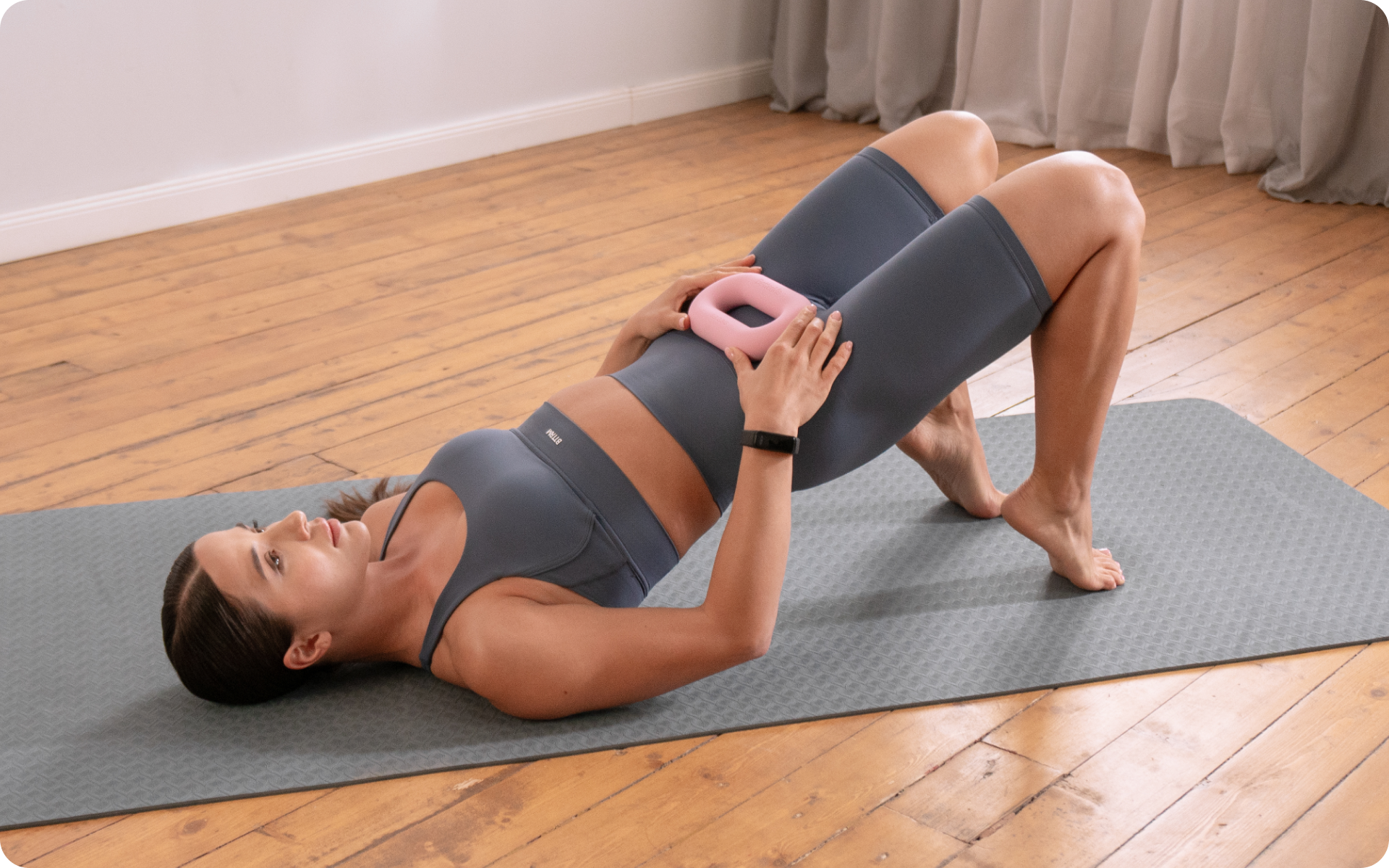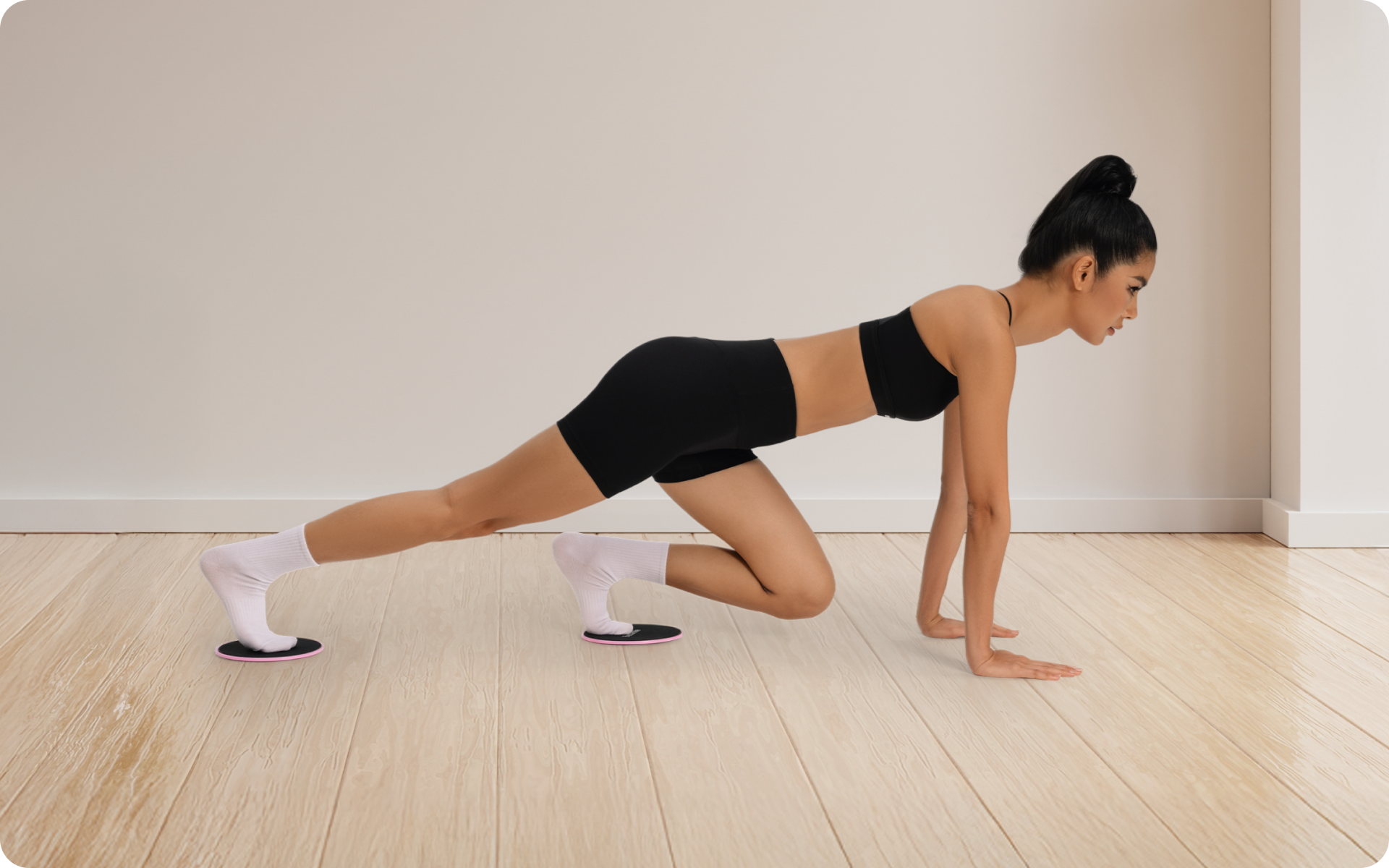Lifting weights may just be the most solid long-term weight-loss strategy. That’s because, according to research, calorie burning happens during and after your weight-lifting session (1). This nifty little phenomenon is known as the ‘afterburn effect.’ Essentially, your body continues to burn calories long after you’ve re-racked the weights. The reason? Weightlifting stimulates muscle growth, and muscles, in turn, require more energy to maintain. This means, even while at rest, a body with more muscle mass burns more calories. By dedicating yourself to 30 minutes of weight lifting every day, you’re not only torching calories during the workout but also boosting your metabolism for hours afterward. It’s like a two-for-one deal for your fitness goals. But for the curious- exactly how many calories can one expect to burn during an average weight-lifting session? Here’s what you need to know.
Get your personalized
meal plan!

What Are The Calories Burned 30 Minutes Of Weight Training?
The number of calories burned during 30 minutes of weight training can vary greatly depending on several factors such as your weight, the intensity of your workout, and your individual metabolism.
On average, a person might burn around 90-130 calories in a 30-minute weight training session (2). If you’re lifting heavier weights or doing a high-intensity strength training workout, that number could be significantly higher, potentially up to 200-300 calories.
It’s worth noting that the calorie burn from weight training continues even after the workout due to increased metabolism from the added muscle mass. This is often referred to as the “afterburn effect”.
How Long Does It Take To Burn 500 Calories Lifting Weights?
The time it takes to burn 500 calories lifting weights can depend on a variety of factors including your weight, the intensity of your workout, and your individual metabolic rate. On average, a person might burn between 180-220 calories in an hour of moderate-intensity weight lifting.
So, to burn 500 calories, it could take roughly between two and three hours of weight lifting. However, if you’re lifting heavier weights or doing a high-intensity strength training workout, you might be able to burn 500 calories in less time, potentially in around an hour and a half.
Read More: Calories Burned In 20,000 Steps: Is It Enough for Weight Loss?
Can You Burn 500 Calories In An Hour Weight Lifting?
Yes, it’s possible to burn approximately 500 calories in an hour of weightlifting, particularly if the workout is high-intensity. High-intensity workouts, which might include lifting heavy weights or doing compound exercises with little to no rest between sets, can significantly increase calorie burn.
How Do You Calculate Calories Burned Lifting Weights?
To calculate the calories burned while lifting weights, you can use a general formula that involves your body weight and the Metabolic Equivalent of Task (MET) value for weightlifting.
The MET value for weightlifting is often considered to be around 6.0 (5). If you know your weight in kilograms, you can use this formula: MET * weight in kg = calories burned per hour (2). Then adjust this for the duration of your workout.
For instance, if you weigh 200 lbs (approximately 91 kg), and you’re lifting weights for 30 minutes, the calculation would be as follows:
6.0 (MET for weightlifting) * 91 kg (your weight) = 546 calories burned per hour
Because you’re only lifting for 30 minutes, you should halve this number, leaving you with approximately 273 calories burned in 30 minutes.
Remember, these numbers are approximations and actual calories burned can vary based on factors like the intensity of your workout and individual metabolic rates.
As per the search results, a person weighing 180 lbs (approx. 82 kg) could burn approximately 411 kilocalories per hour with weight lifting. And a 10-minute weight lifting workout burns about 95 calories, assuming a weight of 200 lbs and a workout solely consisting of free weight lifting.
There are also online calculators available that can help you determine the calories burned during weight lifting, taking into account factors such as your weight, the duration of your workout, and the intensity of the exercises.
Lean and toned up body isn’t just a far-fetched fantasy. Check out the BetterMe app and watch it propel your weight loss journey into high gear!
Is Lifting Weights 30 Minutes A Day Enough?
Yes, lifting weights for 30 minutes a day can be enough depending on your goals.
If you’re looking to improve overall health, boost strength and muscle tone, enhance bone density, and gain mental health benefits, then a consistent 30-minute weight lifting routine can be very beneficial.
However, if your goal is significant muscle gain or dramatic body transformation, you might need longer sessions or additional types of exercise.
With that in mind, let’s look at the benefits of a consistent weight lifting routine, be it 30 minutes every day or more:
Benefit 1: Improved Muscle Strength And Tone
Lifting weights for 30 minutes a day can be an effective way to improve muscle strength and tone.
Strength training targets specific muscle groups, breaking down muscle fibers so they can rebuild stronger and more toned. This process not only enhances your physical appearance, but can also improve your body’s functional strength, making everyday tasks easier to perform.
When you lift weights regularly, your muscles undergo a process known as hypertrophy – the growth and increase of the size of muscle cells. This is what leads to visibly toned and defined muscles. But it’s not just about aesthetics.
Stronger muscles support your joints, which can help prevent injury. This means that consistent weight lifting can help you in other physical activities, whether it’s playing sports or simply carrying groceries (6).
Additionally, increasing your muscle mass can boost your metabolic rate, meaning your body burns more calories even when at rest. This can be particularly beneficial if you’re looking to lose weight or maintain a healthy weight.
In fact, some studies suggest that your metabolism stays elevated for several hours post-workout, further enhancing this calorie-burning effect.
Benefit 2: Enhanced Bone Health
Weightlifting isn’t just beneficial for your muscles; it can also play a crucial role in maintaining and improving bone health.
When you perform weight-bearing exercises you’re essentially applying stress to your bones. In response, your body increases bone density, making your bones stronger and less prone to conditions like osteoporosis (6).
This is particularly important as we age. After the age of 30 we start to lose bone mass, and women are especially at risk of rapid bone mineral density loss after menopause. Regular weight training can help counteract this process, preserving bone health and preventing fractures and breaks (6).
Furthermore, stronger bones can help improve your balance and coordination, which reduces the risk of falls and accidents. This is another reason why weight training is a great choice for older adults.
Just make sure to choose weights and exercises that are suitable for your fitness level and always prioritize proper form to avoid injury.
Read More: Calories Burned Walking 2 Miles: A Key to Weight Loss?
Benefit 3: Mental Health Benefits
The benefits of lifting weights extend beyond the physical. Engaging in regular exercise, including weightlifting, has been linked to numerous mental health benefits. When you work out, your body releases endorphins, chemicals in your brain that act as natural mood lifters (6).
Regular weightlifting can also help manage stress levels and improve overall mental well-being (6).
The focus required during weightlifting can serve as a form of meditation, allowing you to temporarily forget about your worries and concentrate on your movements. This mental break can help reduce feelings of anxiety and promote a sense of calm (6).
In addition, seeing the progress and results of your consistent efforts – such as increased strength or improved physique – can significantly boost your self-esteem and confidence. This positive self-perception can transfer l over into other areas of your life, improving your overall quality of life.
Benefit 4: Lower Risk Of Chronic Disease
Regular strength training, including lifting weights, is associated with a decreased risk of developing chronic diseases. This could be due to the fact that weight lifting positively impacts various aspects of your overall health and well-being.
For instance, it can help manage blood pressure, control blood sugar levels, and reduce body fat, all of which are risk factors for many chronic conditions (6).
Weight lifting also promotes heart health. The intense activity gets your heart pumping, improving circulation and strengthening your cardiovascular system. This can help lower your risk of heart disease and stroke (4).
Furthermore, weight lifting can improve lung function, further contributing to disease prevention as well as enhanced physical performance.
In addition, weight lifting can have positive effects on your hormonal health. It helps balance growth hormone and testosterone levels in both men and women, which can improve mood, energy levels, and overall well-being (6).
By regularly stressing your body in a controlled manner via weight lifting or resistance training , you’re helping it become more resilient, improve overall strength and further, potentially reducing your risk of chronic health issues later on in life.
Benefit 5: Improved Self-Esteem
Engaging in weight lifting can significantly enhance your self-esteem.
As you lift weights and push your limits, you’ll likely see improvements in your strength and physique. This physical progress can translate into increased confidence. You’re not only building muscles but also resilience and self-belief, which can positively impact all areas of your life.
The process of setting and achieving fitness goals, such as lifting a certain amount of weight or performing a specific number of reps, can provide a sense of accomplishment.
Each milestone reached serves as a testament to your hard work and dedication, further boosting your self-esteem. This can motivate you to set and achieve even bigger goals in other areas of your life.
In addition, the discipline and commitment required in weight lifting can spill over into other aspects of your life. The consistency, determination, and work ethic you develop can make you feel more capable and confident, not just in the gym, but in your personal and professional life as well.
Looking for a way to break the vicious cycle of weight loss and tone up all the jiggly parts? Watch the extra pounds fly off and your muscles firm up with the BetterMe app!
Benefit 6: Reduced Risk Of Injury And Falls
Strength training through weight lifting can enhance your overall balance and coordination. This is because the exercises require you to engage multiple muscle groups and maintain proper form, training your body to move more efficiently. Furthermore, strength levels also play a significant role in balance.
Improved balance and coordination can reduce your risk of falls and accidents, which is especially important as you age (6).
Weight lifting strengthens not just your muscles, but also your tendons, ligaments, and bones.
Stronger connective tissue can withstand more stress, reducing the risk of injury during physical activities. Weight lifting can also improve joint stability, flexibility, motion and strength which can also help protect you from injuries.
Weight lifting can help correct muscle imbalances and improve posture, both of which are essential elements for preventing injuries.
Many of us have sedentary lifestyles that lead to weakened core muscles and tight hip flexors, leading to poor posture and potential back problems. Regular weight lifting can help counteract these issues. By improving your strength and tight/shortened muscles, you help reduce the risk of related injuries.
Benefit 7: Targeted Fat Loss
Weight lifting is an effective way to achieve targeted fat loss.
Unlike some forms of exercise that can lead to muscle loss, weight training ensures that most of the weight loss comes from fat. This helps improve body composition and physique.
When you lift weights, your body uses calories for energy to lift the weights and also to repair and build muscle after the workout. This process leads to higher calorie expenditure, which can translate into fat loss when paired with a balanced diet and consistent effort over time.
As you gain more muscle mass through weight lifting, your body’s metabolic rate can also increase. This means you will burn more calories even at rest.
Muscle tissue requires more energy to maintain than fat tissue, so the more muscle you have, the more calories you burn throughout the day. This can further contribute to fat loss and help prevent weight regain.
Furthermore, weight lifting can result in a phenomenon known as “afterburn” or Excess Post-Exercise Oxygen Consumption (EPOC).
After a heavy lifting session, your body has to work harder to restore itself to its normal state, which can increase calorie burn for up to 48 hours after your workout. This, combined with the increased muscle mass and metabolic rate, makes weight lifting a powerful tool for targeted fat loss.
Frequently Asked Questions
Does Strength Training Burn Fat?
Yes. Strength training burns fat by increasing your metabolic rate and helping you gain muscle mass, which requires more calories to maintain than fat tissue. It can also contribute to an “afterburn” effect that increases calorie burn for up to 48 hours after a heavy lifting session.
Can I Build Muscle With A 30 Minute Workout?
Yes, you can build muscle with a 30-minute workout. It takes time and dedication to see the results, but it is possible. To maximize your gains, be sure to focus on compound movements that engage multiple muscle groups at once and stimulate growth hormone release.
Additionally, make sure to get enough rest between workouts so your body has time to recover and grow stronger.
Do You Burn Calories Even After Lifting?
Yes, you burn calories even after lifting. This is known as Excess Post-Exercise Oxygen Consumption (EPOC) or “afterburn.” After a heavy lifting session, your body has to work harder to restore itself to its normal state, which can increase calorie burn for up to 48 hours after your workout.
The Bottom Line
Lifting weights for 30 minutes a day can lead to significant calorie burn, contributing to weight loss and improved body composition. The exact number of calories burned can vary based on factors like your body weight, workout intensity, and individual metabolism.
Regardless, incorporating this form of strength training into your routine offers numerous health benefits.
DISCLAIMER:
This article is intended for general informational purposes only and does not serve to address individual circumstances. It is not a substitute for professional advice or help and should not be relied on for making any kind of decision-making. Any action taken as a direct or indirect result of the information in this article is entirely at your own risk and is your sole responsibility.
BetterMe, its content staff, and its medical advisors accept no responsibility for inaccuracies, errors, misstatements, inconsistencies, or omissions and specifically disclaim any liability, loss or risk, personal, professional or otherwise, which may be incurred as a consequence, directly or indirectly, of the use and/or application of any content.
You should always seek the advice of your physician or other qualified health provider with any questions you may have regarding a medical condition or your specific situation. Never disregard professional medical advice or delay seeking it because of BetterMe content. If you suspect or think you may have a medical emergency, call your doctor.
SOURCES:
- Caloric expenditure of aerobic, resistance, or combined high-intensity interval training using a hydraulic resistance system in healthy men (2015, pubmed.gov)
- Calories Burned / METs Calculator (n.d., metscalculator.com)
- Calories burned in 30 minutes for people of three different weights (2021, harvard.edu)
- Comparative effectiveness of aerobic, resistance, and combined training on cardiovascular disease risk factors: A randomized controlled trial (2019, nih.gov)
- METABOLIC EQUIVALENTS FOR WEIGHT LOSS: WHAT ARE THEY & HOW TO CALCULATE THEM (n.d., nasm.org)
- Resistance Training is Medicine Effects of Strength Training on Health (n.d., lww.com)












